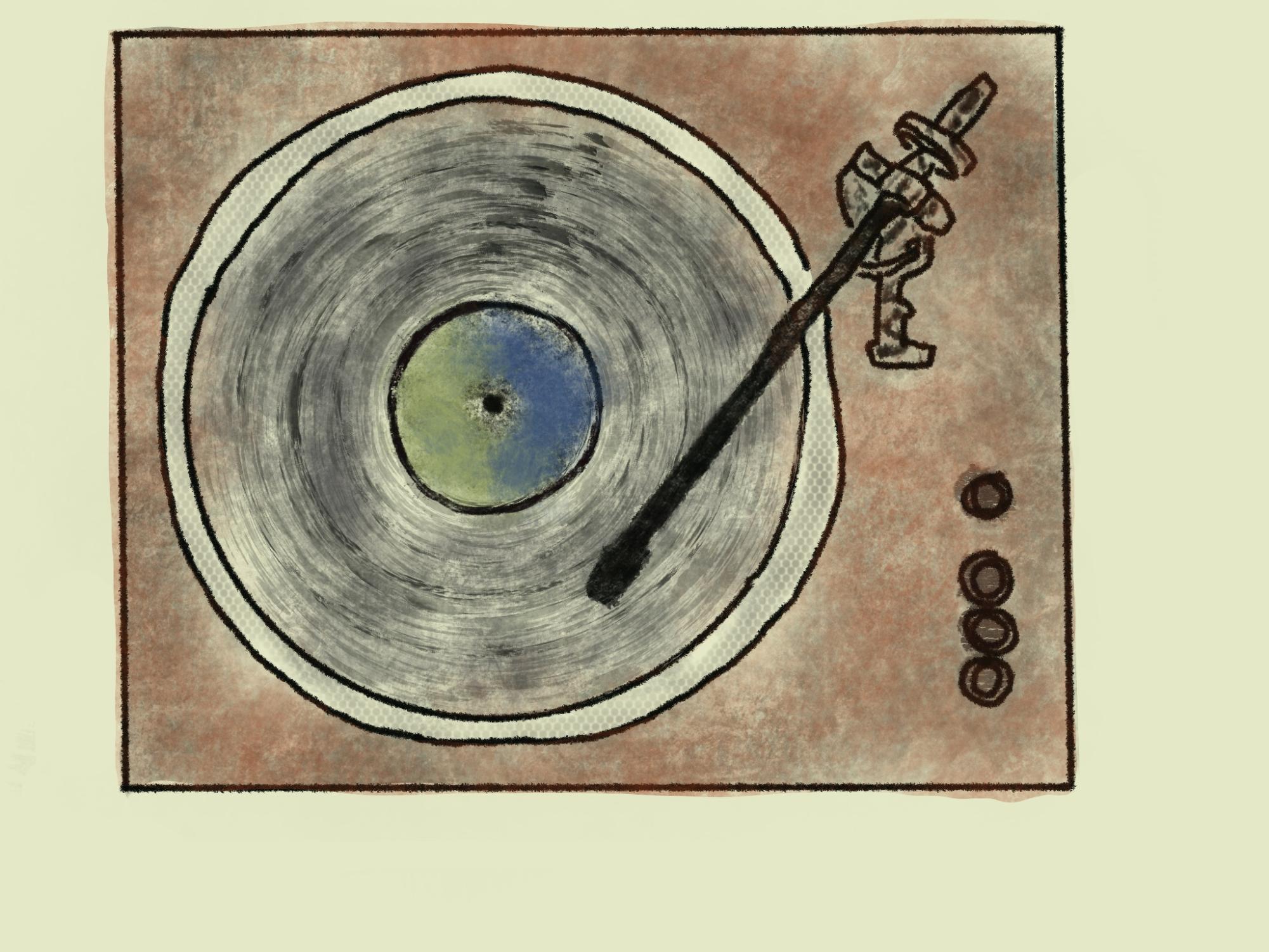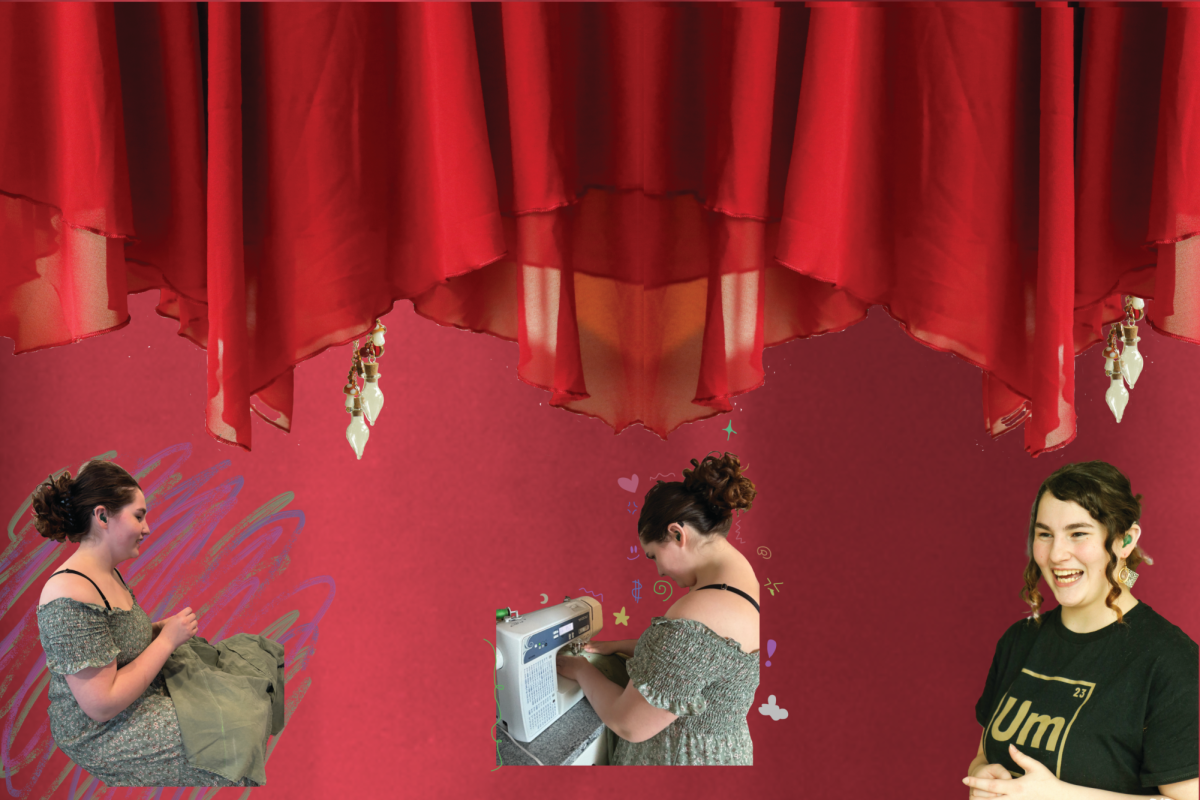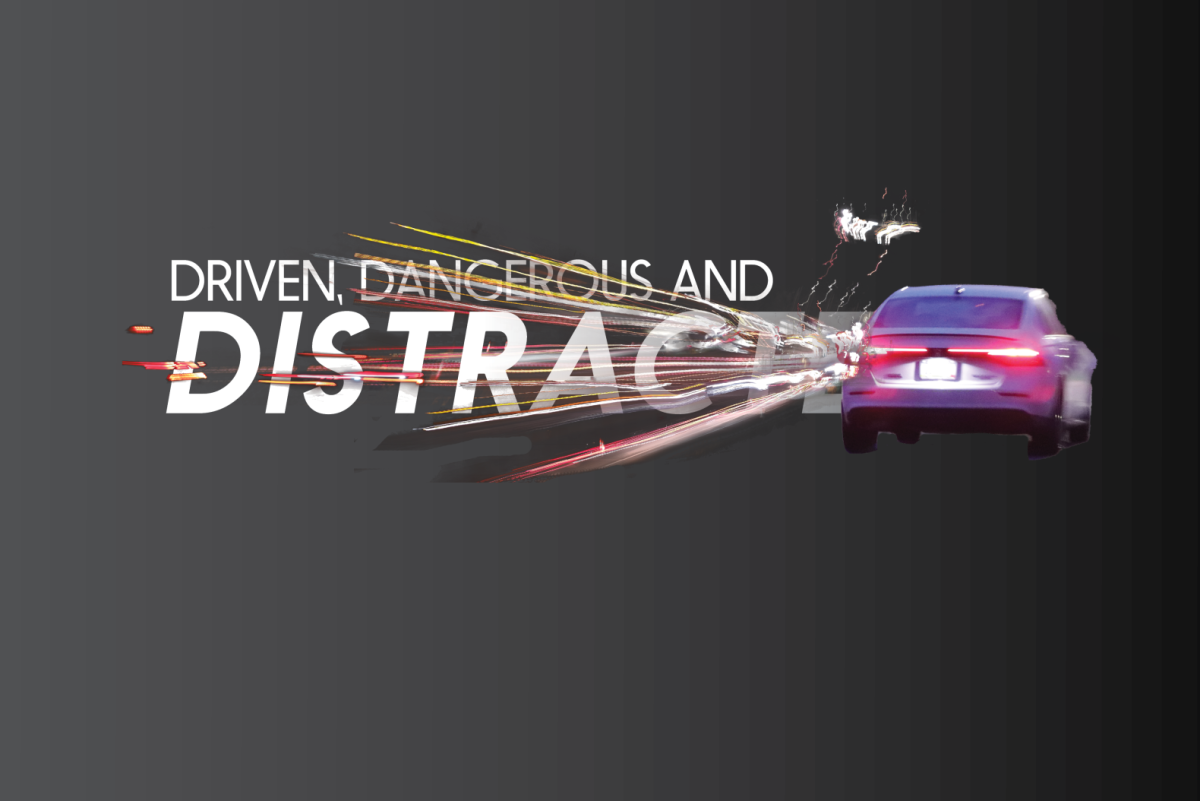Records have been around for years, starting with Thomas Edison’s phonograph in 1877 as the building block. The machine was able to record sounds and play them back using foil-coated cylinders etched with grooves that represented the recorded sounds. Then, the first record player was made by Emile Berliner called the gramophone. This machine used flat discs rather than cylinders, only played the recorded sounds on the disc and was unable to record like the phonograph, but the gramophone ultimately won popularity with its easy use and better sound quality.
As the years passed and technology became more accessible, so did the gramophone. The records used were made of shellac and could only hold a couple of minutes of music on each side. In 1948, a disc made of polyvinyl carbonate—which gave it the name of a vinyl record—that was significantly larger and could hold up to an album’s worth of songs on each side was released, quickly overtaking the old shellac records in popularity.
The stereophonic recording was made in the 1930s but didn’t become mainstream until the 1960s when stereo overtook mono. The stereophonic recording was made by producing a signal to one speaker and a different signal to the other speaker, distributing the sound more and making the listeners feel in the “space” of the music. The monophonic recording is more centralized, with the same sounds in both speakers.
The 70s and 80s were the golden years of vinyl records; cover art and packaging let artists express themselves in more than just music, along with sales being at an all-time high of $2.8 billion in revenue per year in 1978.
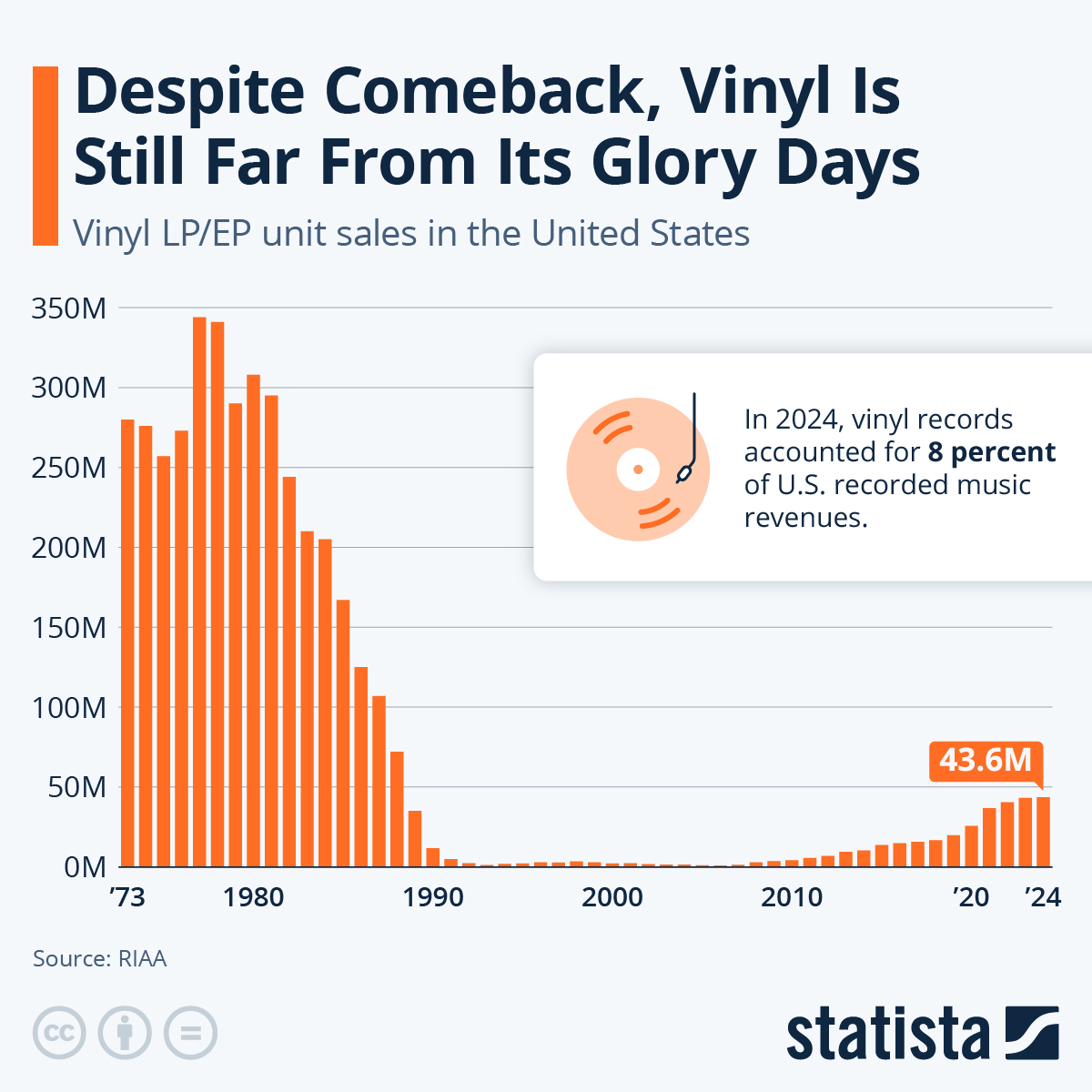
However, things went downhill for records when Sony released the first compact disc in 1982. As CDs gained popularity because of their small size, portability and reliability, record sales had a major decline in the 90s, replaced by CDs and cassette tapes. Cars were being built with CD and cassette players, which didn’t help the decline in records. Soon, records lost the attention of the public eye, and sales depleted tremendously to only $10.3 million in revenue per year and stayed that way for the next 14 years as mp3 players were made and digital music grew. Some die-hard record lovers still collected vinyl, emphasizing the warm sound and audio quality. But in 2007, records regained attention, and their popularity only seemed to grow from there.
Since technology exploded in the early 2000s, record companies realized that they could now make records sound better than ever: new speakers were made, turntables were upgraded and receivers were fine-tuned. Because of the better technology, record players produced better sound, which also contributed to the resurgence of vinyl records. 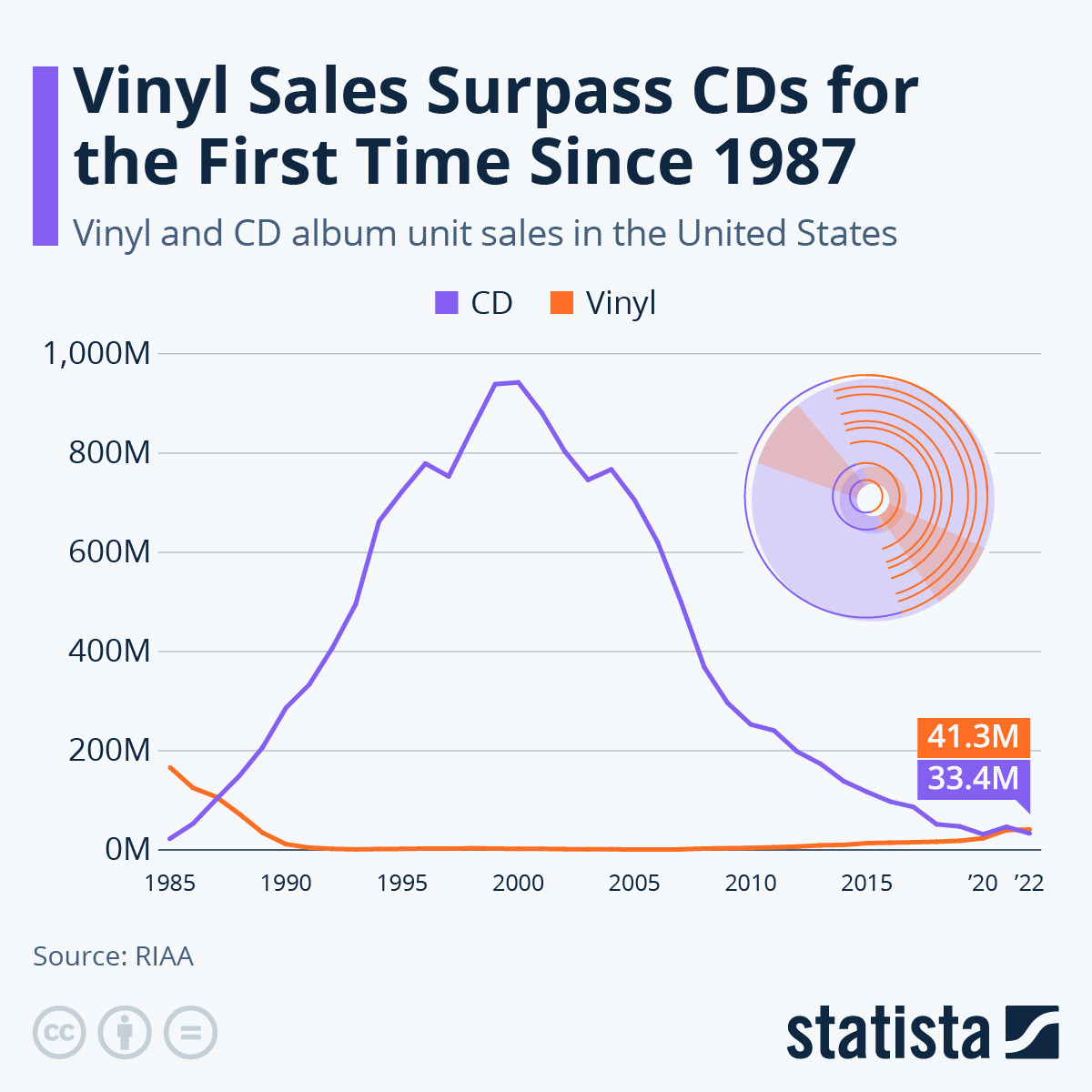
Records have always had great sound, being able to produce high-quality audio because analog recording directly captures the sound waves, while digital music goes through codes and systems that capture the sound waves through numbers. Other than the sound, many claim that records carry a sort of nostalgia from the earlier decades that digital music just can’t recreate.
But many things have changed since the 70s and 80s, prices being one. Back in the peak of records, costs ranged from $5 to $8–which would be around $40 in today’s currency rate–depending on the artist, but now the average cost of a vinyl record is $20, which can quickly go up to $40 based on the artist. $20 in the 70s would be nearly $160 today. This big change in cost is because of the higher price of manufacturing and producing, which in turn forces record stores to up their prices to match the manufacturing cost. But despite the cost increase, record sales continue to climb.
It wasn’t just the music quality that helped records make a comeback, social media also played a big part in the revival, promoting popular artists and the vintage-ness of record players. As records and record players trend on social media, more popular artists release their music on vinyl, such as Taylor Swift, Lana Del Ray and Chappell Roan.
While some might start out buying vinyl records for the trend, it can quickly become a hobby of collecting and listening to music on vinyl. Some record player ‘purists’ criticize the newer generation for buying cheap record players, saying it wears on the record and that vinyl records should be listened to on a good quality player to ensure better music and less damage.
Olaf Christophersen ’25, a senior at West High, mentioned that he started out with Beyonce’s “Renaissance” vinyl record, buying it because he loves the artist and also wanted the posters that some records are packaged with. But once getting a record player, he soon realized that if he could upgrade his record player, then the music would sound even better. “I wanted to see what [was] going on [with records]. Then I started [collecting], and I was like, ‘wait, this is fun,'” Christophersen said. I like listening to them [and] taking care of them. It’s like a collection. People collect art. People collect hobbies.” What started out as a small interest has now become a hobby. Christophersen now has a better record player than he started out with and a bigger collection of records as well, and plans on getting a better set-up in the future if the opportunity arises.
While streaming music has its perks, many claim listening to music on vinyl records sounds better than streaming because of the speakers, the tone quality or simply because it’s a physical piece of media. There are pros and cons to listening to music on anything, be it streaming or through a record player, it all comes down to personal preference and interest.
“I think it’s all about the quality of the music and the texture of the sounds that they use on vinyl is just so different than anything digital. I think it’s partly because of the better speakers that come with record players and vinyl machines, but it’s just so much better to hear. The layers of sound and all the different tones. It’s just way more real,” Eli Bolender ’26, who also collects records, said.
Bolender’s family collects vinyl as well, which is how he got into the hobby. His family didn’t really play the records that much, simply just collecting them. But around 2020 and 2021, listening and playing records sparked an interest in Bolender. He then started collecting, and it just grew from there. Bolender likes to listen to all sorts of music on records, from rock to indie pop.
There are a ton of ways to buy vinyl records in Iowa. One of the main sellers is Record Collector in downtown Iowa City, but you can also find records at Barnes and Noble, Target and Walmart.
Just like anything else, records go through times of growth and decline, peaks and valleys of popularity. They peaked in the late 1900s then declined and remained there for over a decade, then increased again in the early 2000s to now. Everybody has their own opinion of how music should be listened to, of what sounds best to them. A record player is just one of many ways music is presented, and it continues to remain an important part of the music industry.


